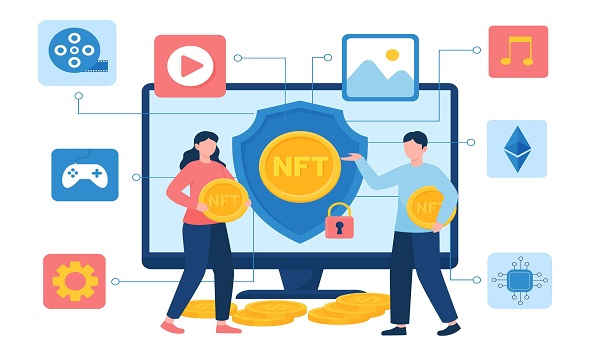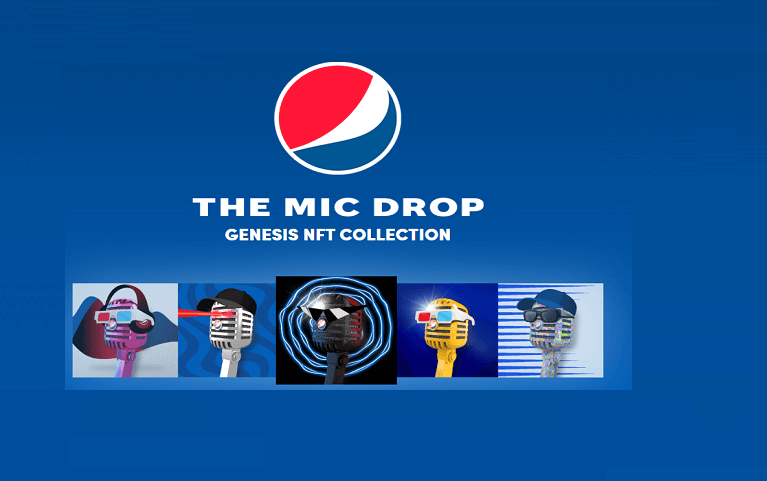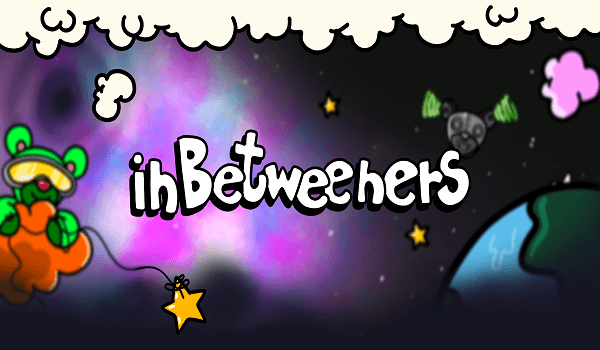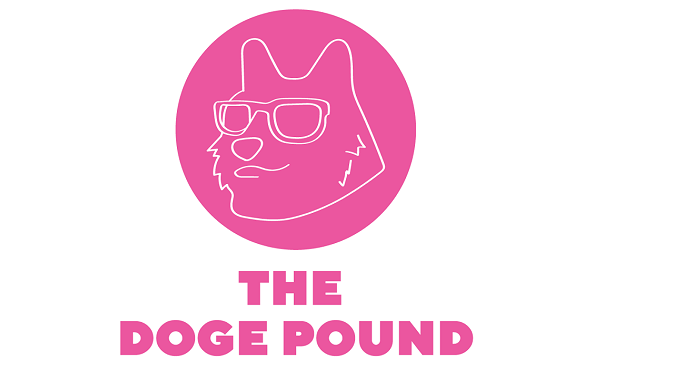On 11 March 2021, the fate of blockchain technology and the history of art took a new turn when the British auction house named Christie’s, sold an NFT (Non-fungible tokens) work of art for $69 million. Since then, marketers across the globe started trailing with the crossing of cryptocurrency and culture. NFTs started tightening its grip that billionaires, celebrities, and investors are unveiling or planning about launching their own NFTs. These digital assets aren’t just for art-lovers. Brands too adore them.
(Source:neilpatel)
NFTs are a special type of cryptographic token based on blockchain technology. It is a digital equivalent of individual collectibles where each piece has a different and unique worth. NFTs function just like bitcoin and other cryptocurrencies. But NFTs are not mutually interchangeable. Each NFT is unique and exists in an original copy. NFTs cannot be set apart and all information about its creator, buyer, and all proceedings with it is saved in a blockchain.
In short, NFTs operate just like the serial numbers which are issued by brands for each of their products to show their authenticity.
As more brands, tech tycoons, and even film stars got into the new trend, NFTs have started to outgrow the crypto world and gain broader attention.
Besides Tesla and SpaceX CEO Elon Musk who produced a techno track about the NFT craze and offered it for sale as an NFT, people like Entrepreneur Mark Cuban and Linkin Park guitarist Mike Shinoda are also big fans of NFTs. They have even started mining their own tokens to fund the charity.
NFTs are versatile. But till now, most of the NFTs are limited to collectible things like photos, audio, art, and virtual items in video games. Now few have realized the opportunities offered by NFTs for leveling up their customer interaction and brand storytelling strategies. In short, with NFTs, businesses are enhancing conversions and increasing income by boosting brand awareness, and intensifying customer interactions.
For example, footwear giant Nike has patented shoes as NFTs named CryptoKicks. By this move, customers can procreate distinct shoes to create custom sneakers that are producible in the real world.
Like that Pizza Hut has launched a non-fungible pizza and earning over $8,000 by selling digitally the images of each slice every week. Twitter CEO Jack Dorsey placed his first-ever tweet up for an auction and earned $3.8 million. Pringles made a virtual flavor of chips called CryptoCrisp and sold it for more than $2000.
Individual NFT artworks sell like hotcakes and are very profitable. NFTs, give the right of ownership to the creator and earn profit from his or her work. Fashion and apparel brands are also among the top sectors which benefited from the NFT wave. They can still exploit the trend by establishing an NFT marketplace for their apparel which allows them to earn revenue.
(Source: freepik)
Tokenizing collectibles is a common application of NFTs. Earlier trading of licensed footballer cards was only possible among sports cards but now the National Basketball Association (NBA) has also launched its collection of NFT cards. Other sports may also follow this trend soon. As a result, the collection will have a variety of sport NFTs to buy. Solid collectibles can be changed into tokenized assets for buying, trading, and selling.
These applications of NFTs wipe off the border between the physical and virtual world and make the most use of the monetization options in both.
NFTs can change the way how digital media is distributed and monetized. At present most of the digital content is being monetized via ad-based (Facebook) and subscription-based platforms (Netflix and Amazon Prime). These platforms work as intermediaries between content creators and viewers. The copyright of the work will be owned by the creators, still, they hand over part of their possession and title over the work to the platform owners.
The popularity of NFTs is snowballing a brand-new media ownership model to make it more creator-oriented. Blockchain-backed virtual contracts eliminate middlemen and allow the creators of the digital assets to directly monetize from their viewers.
A crypto art marketplace Zora is monetizing digital media differently. Instead of selling copies of digital goods, they are making an original copy available to everyone and let the consumers sell the original token over and over again. When the work is traded again, the author receives a part of the sale price.
Make use of this new distributed model for owning and monetizing digital media will give a new direction for the future of digital marketing.
NFTs are the most up-to-date when compared with other NFTs such as art, fashion, and trading cards. As NFTs seeing explosive growth, we may see more brands trying their luck by launching digital collectibles based on IP to earn extra revenue.
The NFT technology has plenty of unique properties, and its full possibilities are only beginning to be discovered by us. In the future, we can see more and more individuals and businesses entering the non-fungible token ecosystem.








